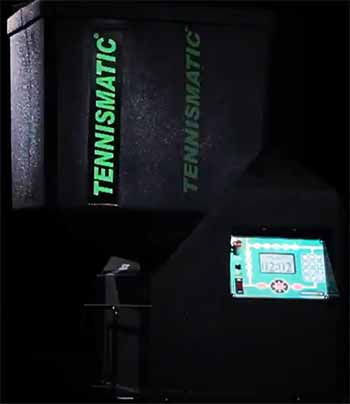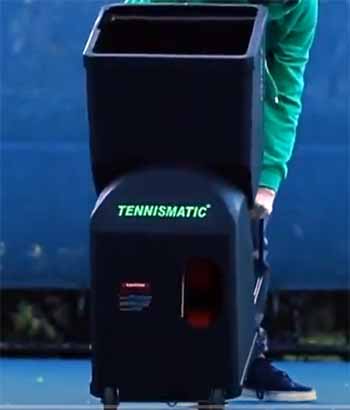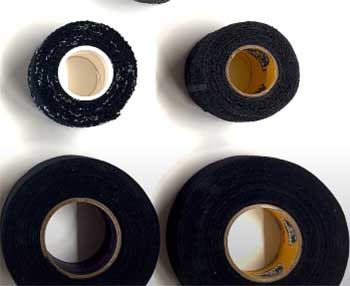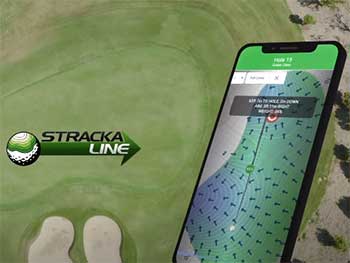Let me tell you something straight up—if you’re serious about upping your tennis game, you need a Tennismatic ball machine in your life. I’ve been swinging rackets for years, and nothing has transformed my practice sessions like this beast.
It’s consistent, versatile, and honestly, a total game-changer when hitting partners flake or you just want to drill that backhand until it’s second nature. Trust me, investing in one isn’t just a purchase; it’s a ticket to leveling up your skills.
So, let’s get into my journey with it and why it might just be your next must-have.
My Experience With The Tennismatic Ball Machine

Picture this: It’s a crisp Saturday morning, and I’m hauling my Tennismatic T203 to the local court.
I’d been itching to test it ever since it arrived—sleek, sturdy, and promising a workout that’d leave me both exhausted and exhilarated.
Setting it up was a breeze; I popped in the battery, filled the hopper with about 120 balls, and flicked it on.
No complicated manuals or endless button combos—just a straightforward control panel that even a tech-challenged guy like me could figure out in minutes.
The first ball whizzed out, and I was hooked. I set it to oscillate horizontally, mimicking a rally where I’d dart from forehand to backhand.
The speed?
Adjustable up to 80 MPH, which was plenty to keep me on my toes without feeling overwhelmed.
I’m an intermediate player—think decent strokes but room to grow—and this machine met me right where I was. I cranked up the topspin to practice those high-bouncing returns that always trip me up in matches, and it delivered, shot after shot, with uncanny consistency.
What really blew me away was the app. Yeah, you heard that right—this thing syncs with your phone. I messed around with custom drills, tweaking the spin and placement until it felt like I was facing a crafty opponent.
One session, I programmed it to lob balls deep, then switch to short drops—pure torture for my footwork, but man, did it pay off. After an hour, I was drenched, my legs were jelly, and I’d hit more balls than I usually would in a week of casual rallies.
It’s not all sunshine, though. The battery lasted about three hours, which was solid for a solo session, but I had to recharge it overnight. And picking up 120 balls? Let’s just say my back wasn’t thrilled.
Still, that first taste of the Tennismatic had me grinning ear to ear—I could feel my game sharpening already.
Pros of The Tennismatic Ball Machine
I’ve put this machine through its paces, and let me tell you, it’s got some serious strengths that make it worth every penny. Here’s what I love about it.
- Killer Consistency for Skill Building

You know what’s tough? Finding a hitting partner who can feed you the same shot over and over.
With the Tennismatic, I get that precision every time.
Whether I’m grooving my forehand or finally nailing that tricky defensive slice, it pumps out balls at the exact speed and spin I set.
I’ve gone from flubbing high topspin shots to smacking them back with confidence, all because I could drill them relentlessly.
For you, that means targeting whatever weak spot you’ve got until it’s a strength.
- Versatility That Keeps You Guessing
This isn’t some one-trick pony. The T203’s got horizontal and vertical oscillation, so I can simulate a full-court rally without a soul in sight. I’ve had it lob balls sky-high for overhead practice, then zip them side-to-side to work my lateral movement.
And with speeds from 20 to 80 MPH, plus adjustable topspin and backspin, it’s like having a pro-level sparring partner. You can tweak it to match your skill level—beginner or advanced—and it’ll still push you to get better.
- Tech That Feels Like Magic
The app control is where this thing shines. I’m no tech wizard, but syncing my phone to the Tennismatic felt like stepping into the future. I’d sit on the bench, sipping water, and program a drill that’d have me sprinting baseline to net.
The AI feature even suggests custom sequences based on my inputs—genius! For you tech-savvy folks, this means practice that’s as smart as it is tough, tailored to whatever you’re chasing on the court.
- Portability That’s Actually Doable
At around 40 pounds, it’s not the lightest thing I’ve lugged around, but it’s manageable. The wheels and handle make it easy to roll onto the court, and it fits in my trunk without a wrestling match.
I’ve taken it to different courts—public, club, you name it—and setup takes maybe five minutes. If you’re someone who likes to practice wherever, whenever, this won’t tie you down.
- Bang for Your Buck
Compared to some pricier brands, the Tennismatic delivers serious value. I paid half what I’d shell out for a top-tier Lobster, yet I’m getting features like app control and custom drills that rival the big dogs.
It’s not cheap, but it’s an investment that’s already saving me on lesson costs. You’re getting a lot here without breaking the bank—hard to argue with that.
Cons of The Tennismatic Ball Machine
Alright, let’s keep it real—nothing’s perfect, and the Tennismatic’s got its quirks. Here’s what I’ve grumbled about.
- Battery Life Could Use a Boost
Three to four hours of juice is decent, don’t get me wrong. I usually wrap up before it dies, but if you’re planning a marathon session or coaching a group, you might find yourself scrambling for an outlet.
I’ve had to pace myself or recharge between days, which isn’t a dealbreaker but definitely a nudge to plan ahead. You’ll want to keep that charger handy.
- Ball Pickup Is a Workout in Itself
With a 120-ball capacity, you’re hitting a ton before reloading—which is awesome until it’s time to gather them up. I’m out there with a hopper, bending over like I’m in a fitness class I didn’t sign up for.
It’s not the machine’s fault, really, but if you’re not into the extra cardio, this part might wear you out.
- Remote Range Can Be Spotty
The app’s great when it works, but I’ve had moments where the connection lags from across the court. Once, I had to jog over and tweak settings manually because my phone wouldn’t sync.
It’s not a constant issue, but when it hits, it’s annoying. You might need to stay closer than you’d like to keep things smooth.
- Not the Quietest Neighbor
This thing hums and whirs when it’s firing balls—not deafening, but noticeable. I’ve used it at public courts without complaints, but if you’re in a quiet spot or sensitive to noise, it might bug you.
It’s the sound of progress, sure, but don’t expect a whisper-quiet session.
- Initial Setup Takes a Minute
First time out, I fumbled a bit figuring out the controls and app. It’s not rocket science, but there’s a moment of trial and error to get everything dialed in. Once you’re past that, it’s smooth sailing, but you’ll need a little patience upfront to unlock its full potential.
Also Read: Is Spinshot Pickleball Machine Worth It?
Maintenance Tips For Your Tennismatic Ball Machine
Owning a Tennismatic is like having a trusty sidekick—you’ve got to take care of it if you want it to keep performing. Here’s how I keep mine in top shape.

- Keep the Hopper Clean: After every session, I empty out the ball hopper and give it a quick wipe. Dirt, grass, and fuzz from the balls can build up, and I’ve found that a clean hopper keeps the feeding mechanism happy. Grab a damp cloth, clear out any debris, and you’re good. It takes two minutes and saves you headaches down the road.
- Check the Wheels and Rollers: Those spinning wheels that launch the balls? They’re the heart of the machine. I peek at them monthly to make sure they’re not clogged with fuzz or wearing unevenly. A soft brush or compressed air does the trick—keeps the shots consistent and prevents jams. You don’t want a misfire mid-drill, trust me.
- Battery Care Is Key: The battery’s a workhorse, but it needs love. I charge it fully after every use, even if it’s not dead, to avoid deep discharges. And don’t leave it plugged in forever—once it’s topped off, unplug it. I store mine in a cool, dry spot, too; heat’s a battery killer. Follow this, and yours will last longer than mine has so far.
- Store It Smart: When I’m not using it, my Tennismatic lives in my garage, covered with a tarp. Moisture and dust are no friends to electronics, so I keep it dry and shielded. If you’ve got a damp basement or scorching attic, find a better spot. A little thought here means it’s ready to roll whenever you are.
- Regular Tune-Ups: Every few months, I give it a once-over—tighten any loose screws, check the power cord for frays, and test the oscillation. I’m no mechanic, but catching small stuff early keeps it humming. If something feels off, Tennismatic’s support is solid; they’ve walked me through a fix over the phone. You can handle this too—just stay proactive.
Comparison With Other Brands: How Tennismatic Stacks Up?
So, how does the Tennismatic hold its own against the heavy hitters? I’ve scoped out the competition—Lobster, Spinfire, Tennis Tutor—and here’s my take, fresh from the court.
First up, Lobster. Their Elite 3 is a beast—70 MPH speeds, killer oscillation, and a reputation that screams premium. I tried one at a club once, and it’s smooth, no doubt. But it’s pricier—think double the Tennismatic’s cost—and the remote’s an extra add-on that doesn’t always play nice from a distance. Tennismatic’s app blows it away for control, and I’m not shelling out extra for features I get standard with my T203.
Then there’s Spinfire Pro 2. This Aussie contender’s got internal oscillation, which hides where the ball’s going—great for reaction training. I borrowed a friend’s, and it’s quiet, sleek, and hits 85 MPH.
But at nearly $2,000, it’s a stretch, and the remote’s not as intuitive as Tennismatic’s app. I’d say Spinfire edges out on stealth, but Tennismatic wins on value and ease.
Tennis Tutor’s Plus model is another big name—65 MPH, solid spin, and a no-nonsense design. I used one years back, and it’s reliable as heck.
But it lacks the tech edge; no app, no custom drills unless you upgrade big-time. It’s lighter at 25 kilos, sure, but Tennismatic’s portability and features feel more modern for a similar price.
Slinger Bag’s the budget king—$650 gets you a portable launcher with basic spin and speed. I tested it at a demo day; it’s fun and light, but tops out at 45 MPH and lacks oscillation unless you buy extras.
Tennismatic’s a leap up—more power, more options, and worth the extra bucks if you’re past beginner stage.
Here’s the deal: Tennismatic sits in a sweet spot. It’s not the cheapest, but it’s not gouging you for features either. Lobster and Spinfire cater to the high-end crowd, Tennis Tutor’s old-school solid, and Slinger’s entry-level.
Me?
I’m sticking with Tennismatic—it’s like the friend who’s always up for a rally, no ego, just results.
Also Read: Is Titan Pickleball Machine Worth It?
Frequently Asked Questions (FAQ)
Absolutely, and I’m living proof. A ball machine like the Tennismatic lets you hammer specific shots—say, your shaky backhand—until it’s muscle memory. I’ve boosted my consistency and footwork in weeks, not months, because I control the pace and placement. It’s not a match, sure, but it’s the next best thing to endless practice partners. You’ll see gains if you commit.
Tough call, but I lean toward Wilson. Their US Open balls are my go-to—durable, bouncy, and they hold up in the Tennismatic without shedding fuzz like crazy. Penn’s solid too, especially the Championship line, but Wilson edges out for me. You can’t go wrong with either; it’s about what feels right on your racket.
Pressureless balls are your best bet. I use Tretorn Micro-X—they’re tough, consistent, and don’t lose bounce like pressurized ones. Regular balls wear out fast in machines, clogging things up with fluff. Stick to pressureless, and your Tennismatic will thank you with smoother feeds. Grab a bulk pack; you’ll burn through ‘em.
It’s all about your needs. I picked the Tennismatic for its versatility—speed, spin, oscillation—and the app sealed it. Think about your level: beginners need basics (Slinger’s fine), intermediates like me want flexibility, and pros might splurge on Lobster. Check battery life, portability, and budget too. Test one if you can—you’ll know what clicks for you.
Conclusion: Your Tennismatic Awaits
Look, if you’re on the fence, let me nudge you over: get a Tennismatic ball machine.
My time with it has been a revelation—better strokes, sharper reflexes, and practice whenever I want. It’s not flawless, but the pros far outweigh the cons, and it’s a steal compared to the competition.
Whether you’re chasing a tournament win or just some fun on the court, this machine’s got your back. Go for it—you won’t regret it.

